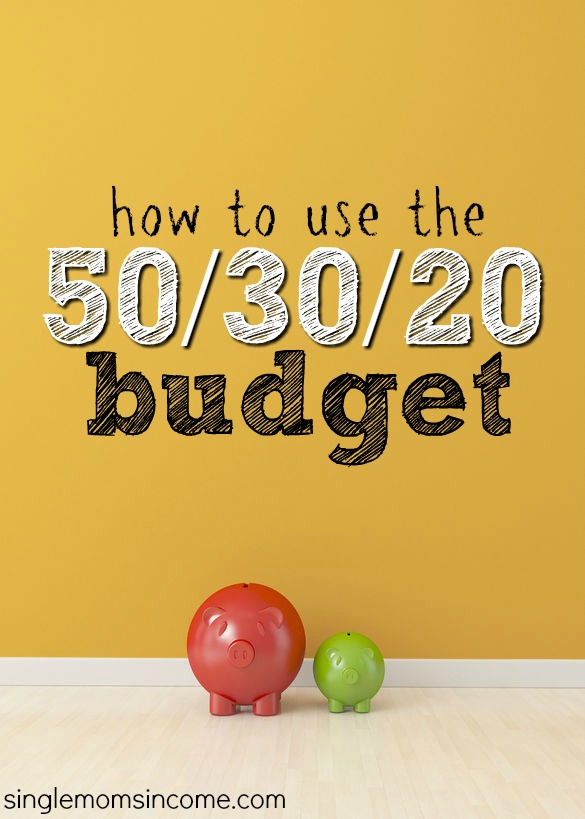 Have you ever wondered how much of your income should you be saving? I’ve offered some advice and suggestions on this topic before, but there isn’t really a one-size-fit-all answer for everyone. Saving is crucial if you want to meet your financial goals and be able to handle unexpected expenses without going into debt.
Have you ever wondered how much of your income should you be saving? I’ve offered some advice and suggestions on this topic before, but there isn’t really a one-size-fit-all answer for everyone. Saving is crucial if you want to meet your financial goals and be able to handle unexpected expenses without going into debt.
While it’s apparent that you should be saving something, you’ll need to make sure you meet all your other living expenses first and they where budgeting comes in. Budgeting is a popular and necessary way to tell your money exactly where to go. While creating a budget can be helpful, it can also be quite a drag.
For people who don’t like all the time and effort that goes into budgeting, there are simpler methods to try out.
Regardless of your income, current needs and goals, the 50-30-20 rule of budgeting is a great way to plan out your spending and saving each month so you can meet all your financial goals. This method is especially easy to implement if you are newer to budgeting. Here’s how it works.
Breaking Down the 50-30-20 Budgeting Method
Under the guidelines of this budgeting method, you should spend 50% of your take home pay on necessities like your rent or mortgage, utility bills, groceries, transportation, clothing, etc. Then, 30% should go toward wants and lifestyle choices like dining out, entertainment, a gym membership, extracurricular activities, etc.
Finally, 20% of your take-home pay should go to long-term savings and debt payments.
Once you separate your monthly expenses into these three main categories, budgeting your money will be pretty simple moving forward. For example, let’s say you earn $2,500 per month after taxes. Ideally, you should spend around $1,250 on your living expenses, $750 on non-necessity expenses and maybe even some variable expenses, and you should use the remaining $500 to save and pay off up any debt you have.
Think About Your Goals
Financial goals are among the top 5 types of goals people set each year. If you’re setting financial goals, they probably have something to do with reducing your spending or expenses, saving and investing more, and paying off debt. It’s important to save a portion of your income each month for emergency expenses as well as retirement contributions and long-term savings goals.
With the 50-30-20 budgeting rule, you can very well split the 20% up based on your savings goals. If you have an employer-sponsored retirement account, then you won’t have to worry about budgeting for retirement savings unless you wanted to open something like an IRA (individual retirement account).
Think about your savings goals including whether you’ve met your target balance for your emergency fund. It’s important to have at least 3-6 months’ worth of expenses saved up and using the 50-30-20 rule can certainly help you get there.
Paying Down Debt
If you’re saving 10% of your income for short and long-term savings goals, the other 10% can go to debt payments if you have any. Now if you have quite a bit of debt, putting just 10% of your income toward that debt might not cut it.
I personally know some people with high amounts of student loan debt and their minimum payment alone exceeds 10% and even 20% of their income. Given the fact that the average monthly payment on a new car loan is over $400, it’s important to realize that debt can eat up a ton of your disposable income.
This should motivate you to desire to pay your debt off ASAP. If this is your mindset and you feel like the 50-30-20 budgeting method won’t work for you, you’ll just need to adjust the percentages so you can allocate more money to the areas you want to prioritize.
For example, If you earn $3,000 after taxes but want to put $600 per month toward your debt ($500 in minimum payments and $100 in extra payments), you’ll need to make a few changes since you’ll need to spend 20% of your income in the debt repayment category alone.
If you keep your living expenses low, you might be able to get by with only using 45% of your income on necessities which would be $1,350 in this case.
Then, you should be able to cut expenses that are in the wants category down to 15% of your income so that would be $450.
Making those adjustments now leaves you with 40% of your income or $1200 to dedicate to saving and debt payments – not that bad!
Don’t Overthink It
The 50-30-20 budgeting method won’t perfectly apply to everyone’s situation but it is pretty flexible because it’s just a guideline. You should feel free to tweak the numbers based on your financial priorities.
If you’re looking for a way to painless way to start budgeting, the 50-30-20 method will provide you with a great foundation in terms of deciding how you will prioritize certain expenses over others in order to comfortably live below your means so you can focus on saving and paying off debt at a steady rate.
Have you ever tried the 50-30-20 budgeting style? Would you make any adjustments to it?

Photo Credit: motionkarma



Hi Chonce, I have stopped by here to learn about this 50-30-20 budgeting method. This is really a cool way of simplifying every month’s budgeting process. Thanks for outlining each steps of the 50-30-20 method.
Thanks for reading Mahesh!
This was a great explanation! I actually lowered my housing expenses in order to increase my debt/savings percentage, which has helped enormously. But this is a helpful guideline on how to split your expenses!
I’m glad to hear you were able to lower your housing expenses. That’s always something I consciously try to keep under control.
Totally agree, paying off debt is incredibly important to anyone’s financial health and future happiness.
Yes, which is why this budgeting method may not be best for everyone, but you basically have to make it your own then graduate to something else when you get into the habit of managing your money properly.
Great information for people who are scared to see what their budget is because they don’t want to necessarily cut out their lifestyle. I think the 50-30-20 method is at least the starting point for us to realize that we have to limit lifestyle temporarily to at least eliminate debt. Then greater lifestyle changes will come. And the 20% is more about savings than debt. Thank you for sharing.